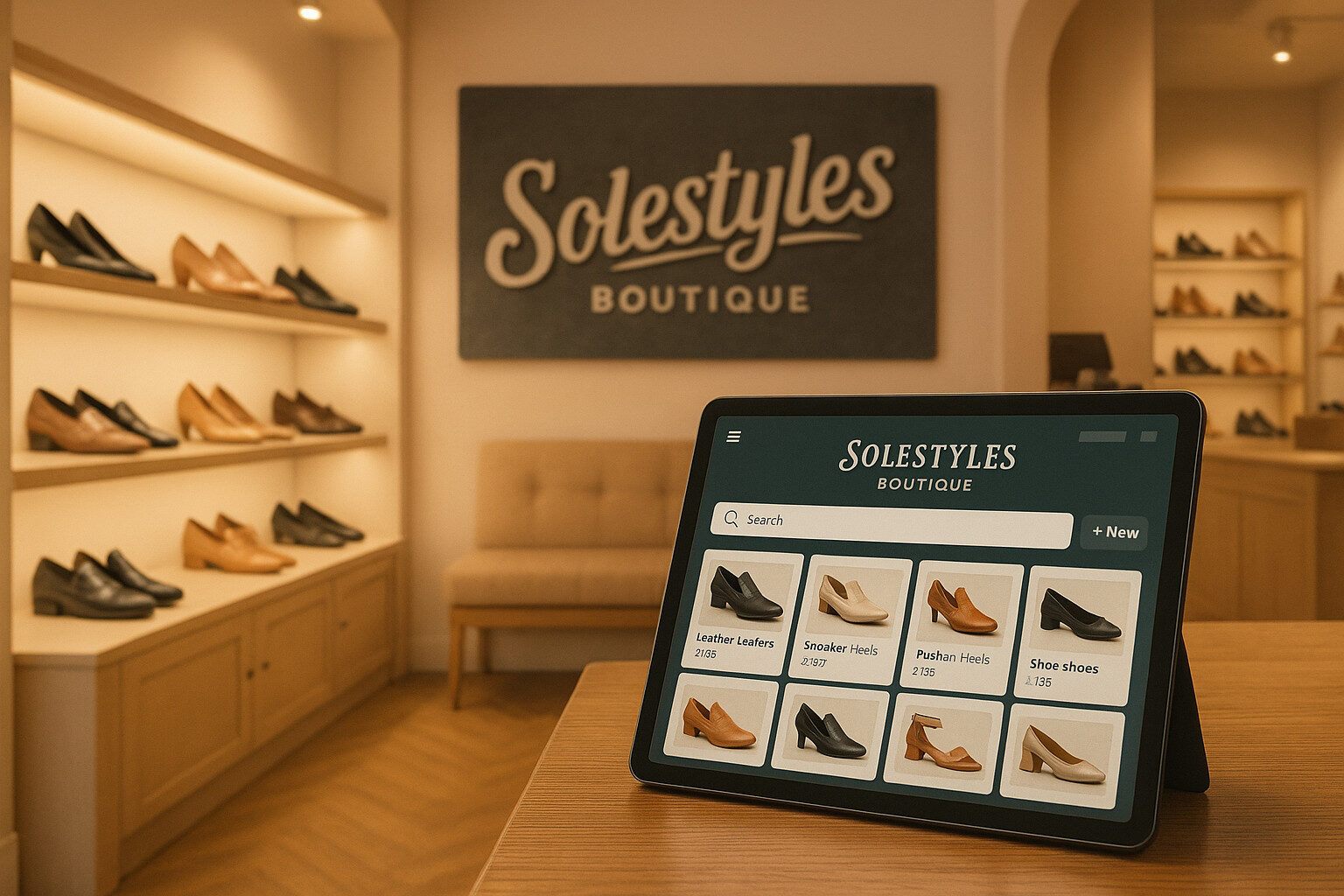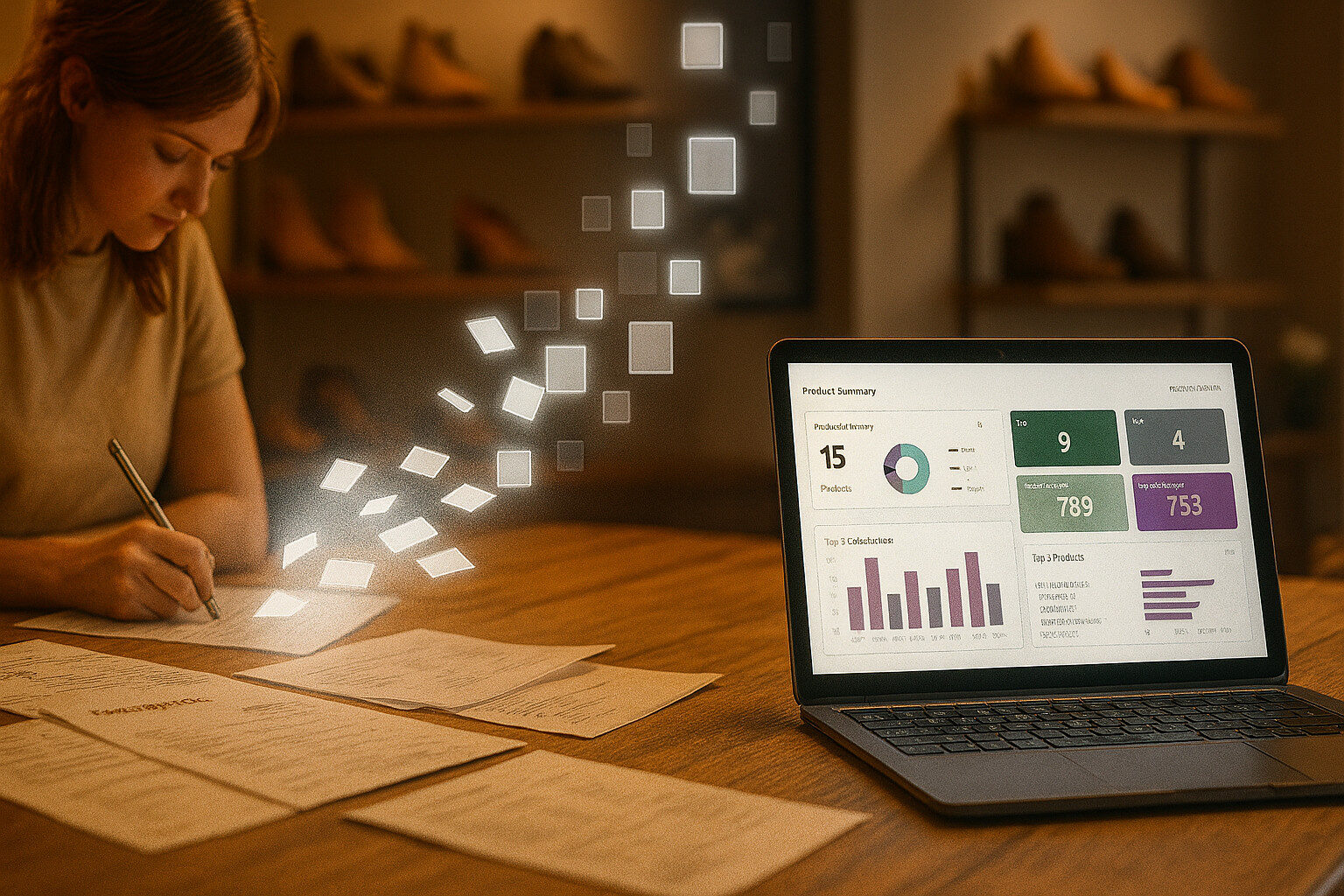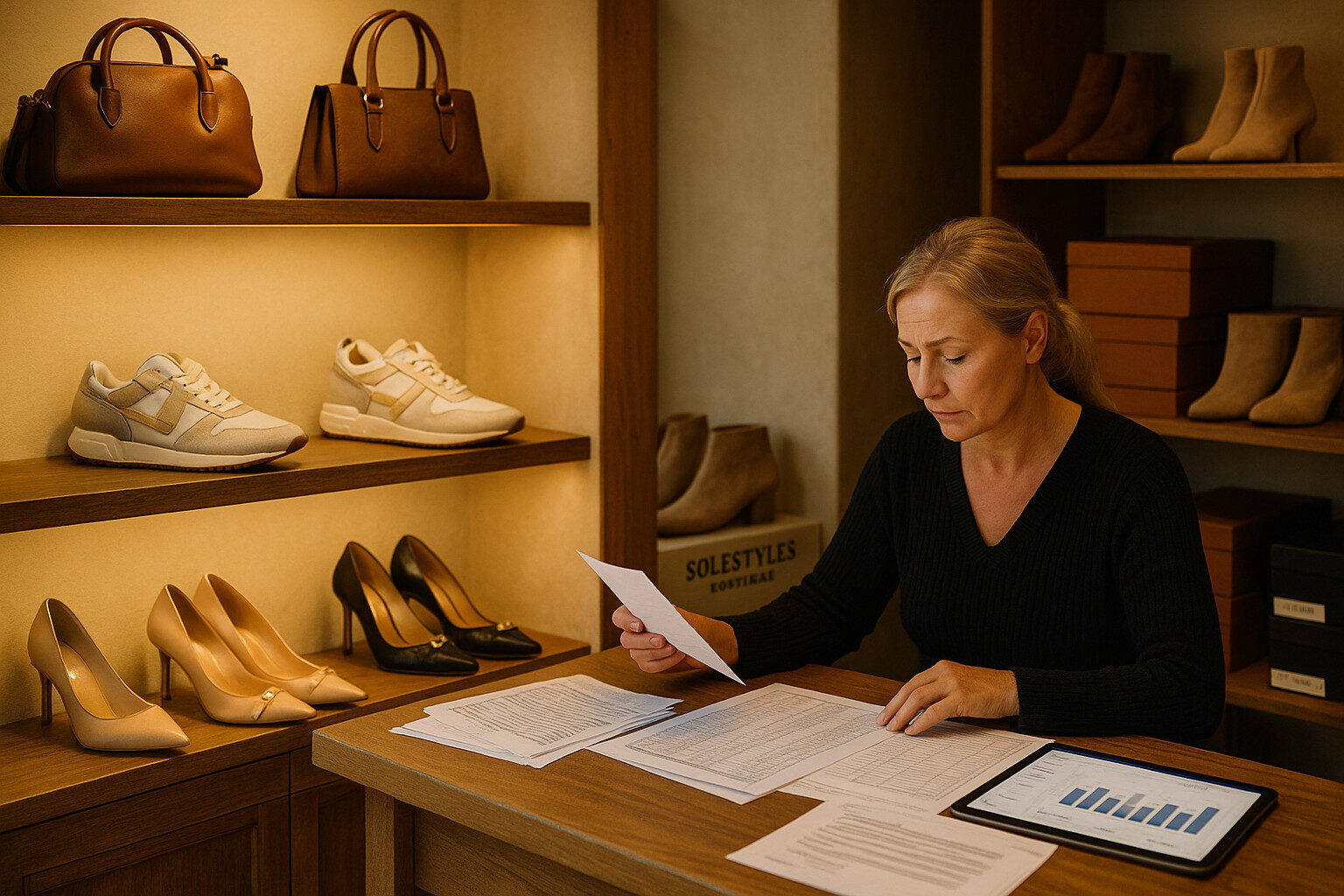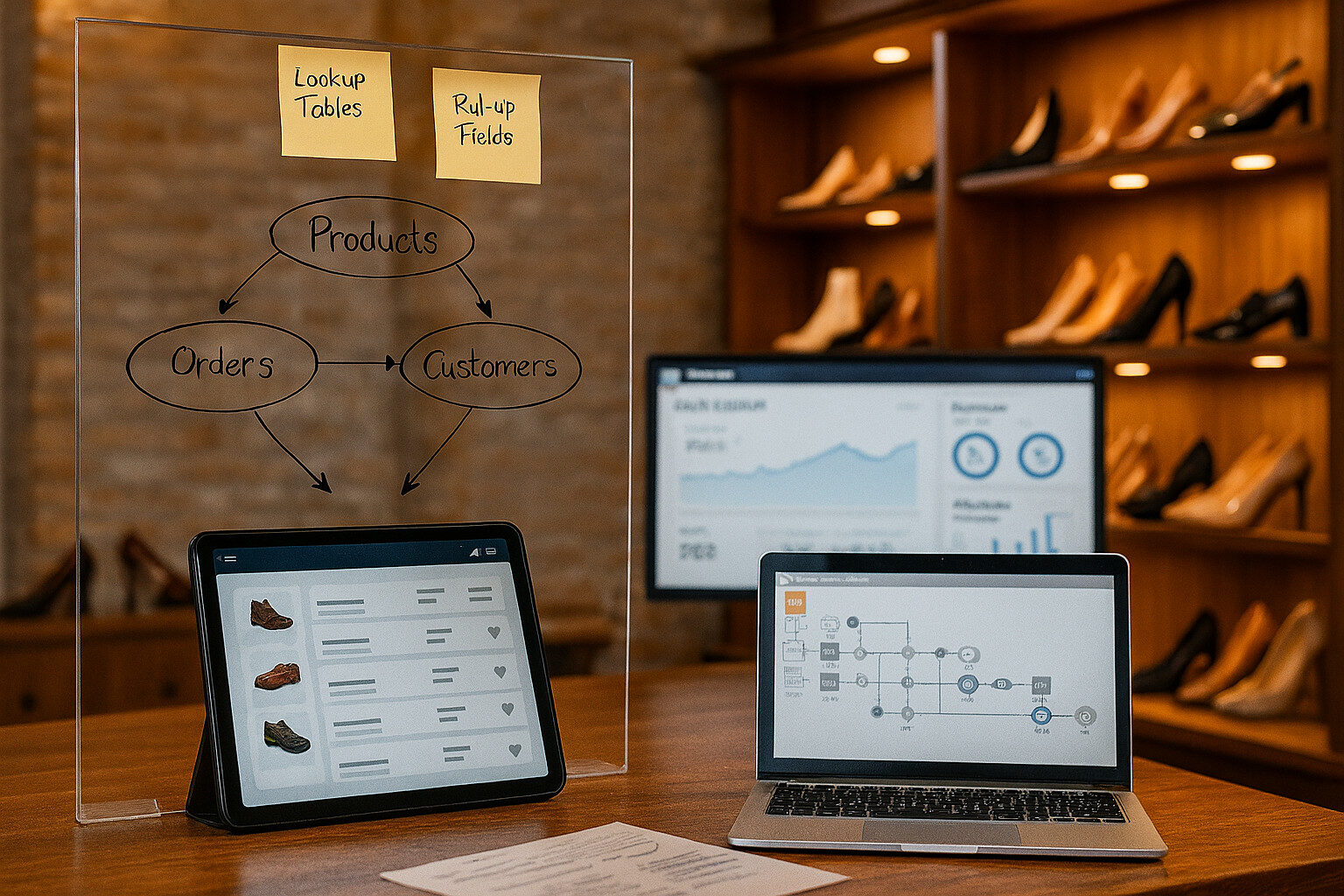

Note!! Names and Details have been anonymised to ensure security is maintained.

When Solestyles Boutique – a family-run fashion retailer tucked away in the heart of West Yorkshire – reached out to me during a career break, their back-office processes were creaking under the weight of growth. What began as a cosy High Street shoe shop had expanded into weekend pop-ups and a modest online store, yet inventory remained tracked on paper printouts, stock levels were updated in confusing Excel files, and customer orders arrived via phone calls, emails and handwritten order forms at weekend pop-ups. The result? Delays, errors and frustrated staff.
In early 2024, I embarked on a mission to replace this aging process that used manual systems with a single, unified low-code platform built on Microsoft Power Platform. Over the course of several months (in my own time and at no cost), I learned, developed, designed and delivered an end-to-end solution that would empower shop-floor assistants, give managers administrative depth, automate routine communications and surface the insights Solestyles needed to plan for the seasons ahead.
In part 1 (this post) of the journey, I’ll share the rich business context, the detailed requirements that were unearthed, and the technical hurdles that were overcome to lay a rock-solid foundation for the boutique’s digital future – all anonymised to protect the company.
 Solestyles Boutique trades on personalised service and exclusivity. Their shelves brim with limited-edition trainers, artisan-crafted heels and independent-designer handbags. Customers appreciate the one-to-one styling advice and the ability to pre-order upcoming drops, but the internal processes struggled to keep pace.
Solestyles Boutique trades on personalised service and exclusivity. Their shelves brim with limited-edition trainers, artisan-crafted heels and independent-designer handbags. Customers appreciate the one-to-one styling advice and the ability to pre-order upcoming drops, but the internal processes struggled to keep pace.
Every morning, the shop manager would rifle through a jumble of paper invoices and Excel sheets to confirm stock levels before opening the doors. If an item sold out at lunchtime, the assistant on duty had no quick way to tell a customer when a new delivery would arrive. Meanwhile, head office wrestled with sales figures scattered across multiple files, making it almost impossible to forecast demand accurately particularly during peak weekends and seasonal promotions.
Solestyles owner (a good friend) knew that, without a robust digital backbone, the business risked inventory mishaps, lost sales and overworked staff. The brief was clear:
“Replace the tangle of spreadsheets and paper forms with a modern, mobile-friendly system that would unify data, simplify everyday tasks and deliver real-time insights all while keeping costs sensible for a small Yorkshire business.”

Our discovery workshops with Solestyles team surfaced five interwoven needs.
Beyond these functional aims lay a series of non-functional imperatives:
 Converging those requirements into a single Power Platform solution brought its own set of challenges. As a project team and after discussions and comparisons, the team chose Dataverse as our central database, but modelling the relationships between products, orders and customers demanded careful design. I created lookup tables and roll-up fields to calculate metrics such as “Days to Ship” and “Average Basket Value” dynamically, ensuring referential integrity without duplicating data.
Converging those requirements into a single Power Platform solution brought its own set of challenges. As a project team and after discussions and comparisons, the team chose Dataverse as our central database, but modelling the relationships between products, orders and customers demanded careful design. I created lookup tables and roll-up fields to calculate metrics such as “Days to Ship” and “Average Basket Value” dynamically, ensuring referential integrity without duplicating data.
On the shop-floor side, an optimised Canvas App was developed for iPad use. A deceptively simple product-search screen hid complex delegation logic: by favouring delegable functions like “StartsWith” and indexing critical columns, I sidestepped the 500-record filter limit and consistently delivered sub-two-second load times. Offline capabilities meant that during a power cut or in a fringe-signal car park, staff could still scan stock and queue their updates for automatic sync as soon as connectivity returned.
For the management console, a Model-Driven App gave Solestyles senior management team rich, responsive forms and guided process flows; whether approving a markdown, adding a new supplier or reassigning a stock batch. The design layered in business rules to enforce stock thresholds, and embedded the first Power BI dashboard directly into the app, so key performance indicators (KPIs) and trend lines appeared the moment a manager logged in.
Automating customer communications and internal alerts fell to Power Automate. I designed resilient flows, complete with scopes and retry scopes, to send order confirmations, dispatch notifications and low-stock warnings. If the email service ever stopped, the fallback branches would trigger a retry rather than drop the notification into a void.
Finally, the Power BI model blended real-time DirectQuery connections to Dataverse with imported historical snapshots. This hybrid approach let Solestyles owners pore over day-by-day sales during flash promotions, while still benefiting from speedy, aggregated reports for longer-term planning. Incremental refresh policies were applied to shave hours off overnight data loads, and carefully sculpted measures; Total Sales, Sell-Through Rate, Average Hold Time; that directly aligned with the boutique’s KPIs.
 By the time I hand over the first developed and (almost) polished solution, Solestyles Boutique will have transformed from a paper-based operation into a sleek, low-code powerhouse. Shop assistants now handle stock checks and special orders in moments; managers adjust pricing, monitor trends and view reports without leaving the Model-Driven App; and customers receive timely email updates without a single manual click. Most importantly, the client could finally breathe easy, confident that their data was accurate, secure and always at their fingertips.
By the time I hand over the first developed and (almost) polished solution, Solestyles Boutique will have transformed from a paper-based operation into a sleek, low-code powerhouse. Shop assistants now handle stock checks and special orders in moments; managers adjust pricing, monitor trends and view reports without leaving the Model-Driven App; and customers receive timely email updates without a single manual click. Most importantly, the client could finally breathe easy, confident that their data was accurate, secure and always at their fingertips.
In the next part of this series, I will dive deep into the Canvas App that lies at the heart of the daily user experience. I’ll walk through the screen designs, the key formulas that make filtering and searching lightning-fast, and the offline strategies that keep the boutique humming even when the signal drops. If you’re considering a similar low-code transformation for your small business, or simply love the art of the possible, stay tuned.
For now, I hope this behind-the-scenes look at Solestyles background, requirements and challenges demonstrates how a thoughtful blend of governance, performance tuning and user-centric design can turn a West Yorkshire shop into a case study in power platform powered success.

Microsoft Solution Architect, Senior Project Manager, and Mental Health Advocate